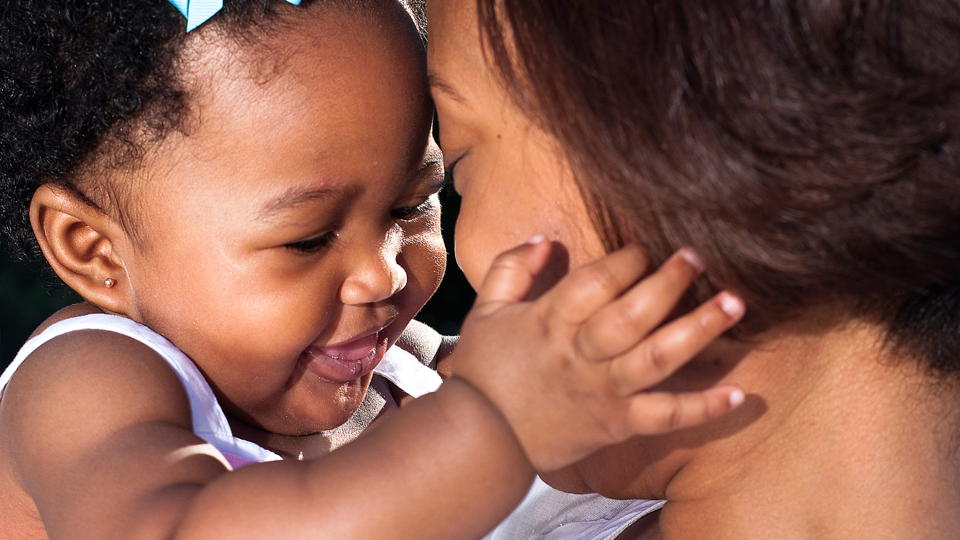Hooked on a feeling

From doing a happy dance to yowling with frustration, toddlers' little bodies hold huge and rapidly changing emotions.
Like a little puppy, he dances in circles, practically yipping with excitement. Perhaps he just got a sticker from the librarian, or he's just celebrating the joy of a new morning.
Suddenly, there is a moment of disappointment or frustration. Fists clenched, his little body trembles. Unable to find the words he has only recently learned, he howls like a wild animal. Flushed with emotion, his face turns bright red and tears stream down his face. For some unknowable or, to me, seemingly trivial reason, my son is gripped by emotions far larger than his tiny frame can handle.
And then, just as quickly as the storm breaks, it passes. He wraps his small arms around me and nuzzles in my neck. He gives me a kiss and says, "I wuv you, mommy."
Little bodies, big emotions
Although they are physically small, their emotions are giant.
Sometimes toddlers are just hungry or tired or frustrated by their verbal limitations. Other times their emotions are pent-up geysers in need of release.
Parents may take comfort in knowing that their young children are most expressive about their emotions in a safe environment--in other words, you are gifted with your child's explosive tantrums because he trusts you and knows you will love him unconditionally.
Validating emotions
Annie at PhD in Parenting writes about "in arms crying" and urges parents to see these moments as opportunities to validate our children's emotions.
As a person who feels emotions very strongly and has children who show signs of similar levels of intensity, I know that part of my job as a parent is to teach them how to manage their emotions without denying them.
Identifying emotions
From infancy, a good beginning is learning how to identify emotions. Babies will often mimic a parent's expressions and respond to their caregivers' feelings. Books showing facial expressions are great prompts to learn about emotions--a baby-safe mirror adds to the fun.
Once toddlers and preschoolers can identify emotions, they can begin the process of understanding them. A child may sometimes be able to say, "I am angry because..." or "When I am angry, I feel like..." As their verbal expression becomes more precise, articulating their feelings may lessen the frequency of the tantrums.
One day my son asked me for some juice and I told him that his babysitter could give him some. She did not hear the exchange though and answered, "I don't know. Did you already have juice?" My son started to get tense and frustrated but then he remembered, he had the words to express himself: "Mommy say yesss...I have juice!" Crisis averted.
This is also an important step in teaching problem-solving skills. My children are fond of my phrase, "We're a problem-solving family!" Once children internalize the steps of solving problems with you, they may be less prone to reacting to frustrations with tantrums
Of course, it is not always so simple, even with verbal children.
Modulating emotions: What color is your day?
For children who struggle with modulating their emotional response, a friend of mine who works with students with special needs has developed a system of colors. If yellow is a happy color, are you a bright sunshine, shout-it-from-the-rooftops yellow? Or are you more of a buttery, mellow, just-need-to-smile yellow? Maybe you are pink sort-of-angry-instead-of-a-raging-fire-red angry. Perhaps you are a light blue sort-of-sad instead of a deep, sobbing blue sad.
Valerie at Frugal Family Fun Blog asks, "What color was your day?" and talks about how sketching and journaling can be a great way for even pre-writers to process emotions.
Processing emotions
Another way to process emotional experiences is to read stories and to role play.
Kim Moldofsky at Hormone Colored Days recommends Sometimes I'm Bombaloo for gifted children with intense emotions. Check out Allison McDonald at No Time for Flashcards for a fun tension-releasing art activity and more picture books about emotions.
We also find that playing with dolls and figurines helps take the pressure off our children and allows them the opportunity to work through frustrating experiences. Although they cannot always tell me why they were upset in the moment, a few hours later I will overhear a fuller story in their play.
Last week my son had a meltdown when we would not let him take a chair and a slice of pizza from another little girl. I took him outside, away from the audience, and waited until he was calm enough to come back to the group. Hours later, back at our house, completely unprompted, he looked in no direction in particular and said, "I'm sowwy." "Why are you sorry," I asked. "Sowwy, Alisandra..."
With a little distance, he was better able to understand how his emotions affect other people and to begin to even feel empathy.










